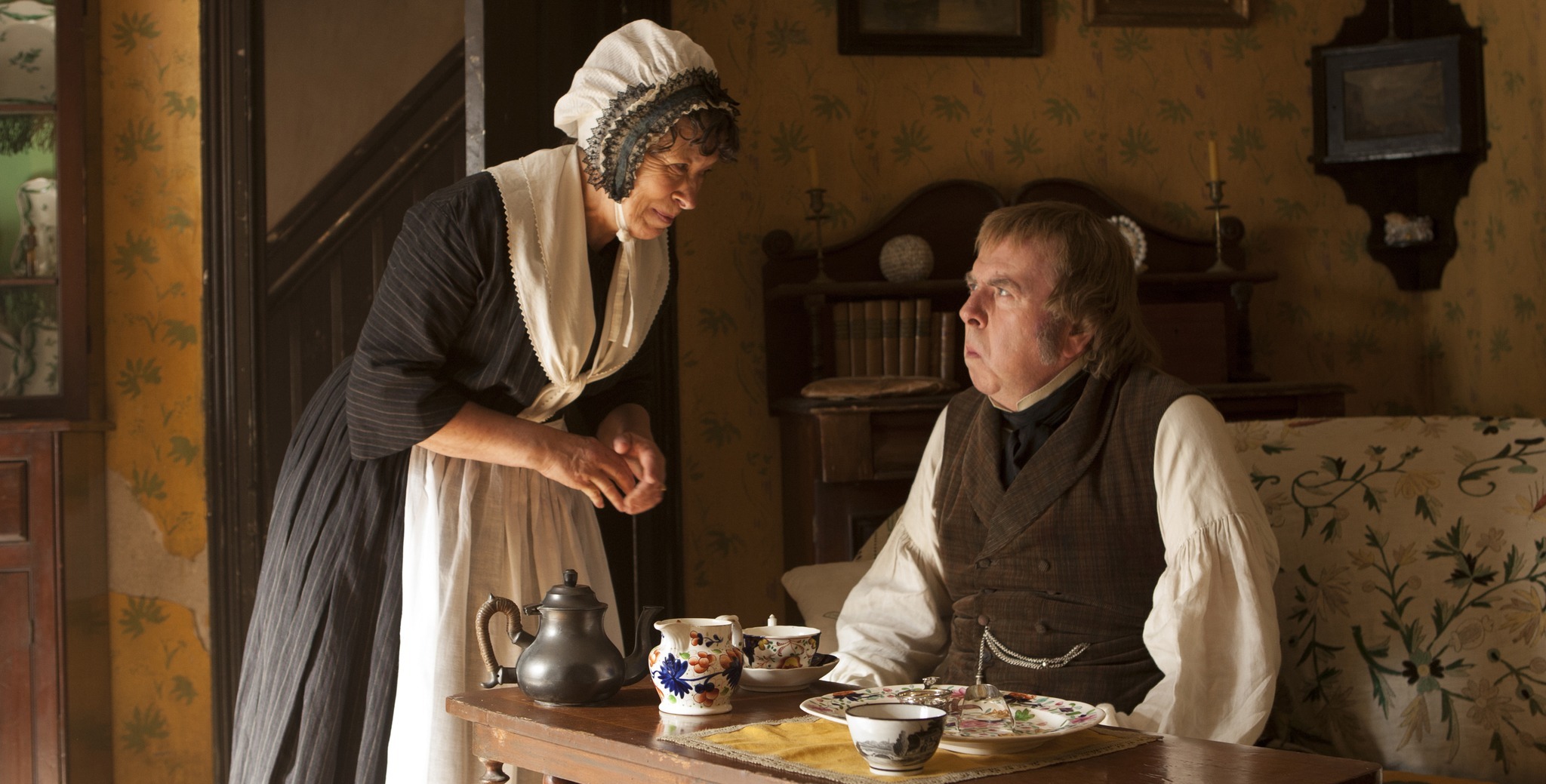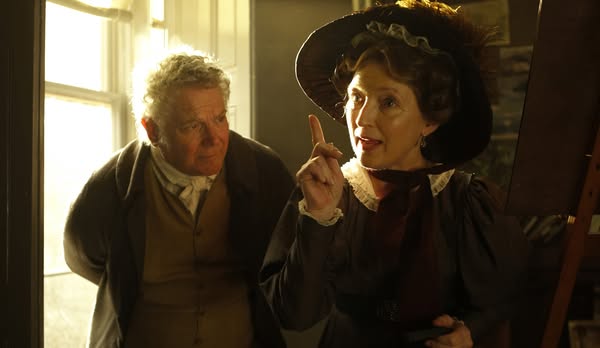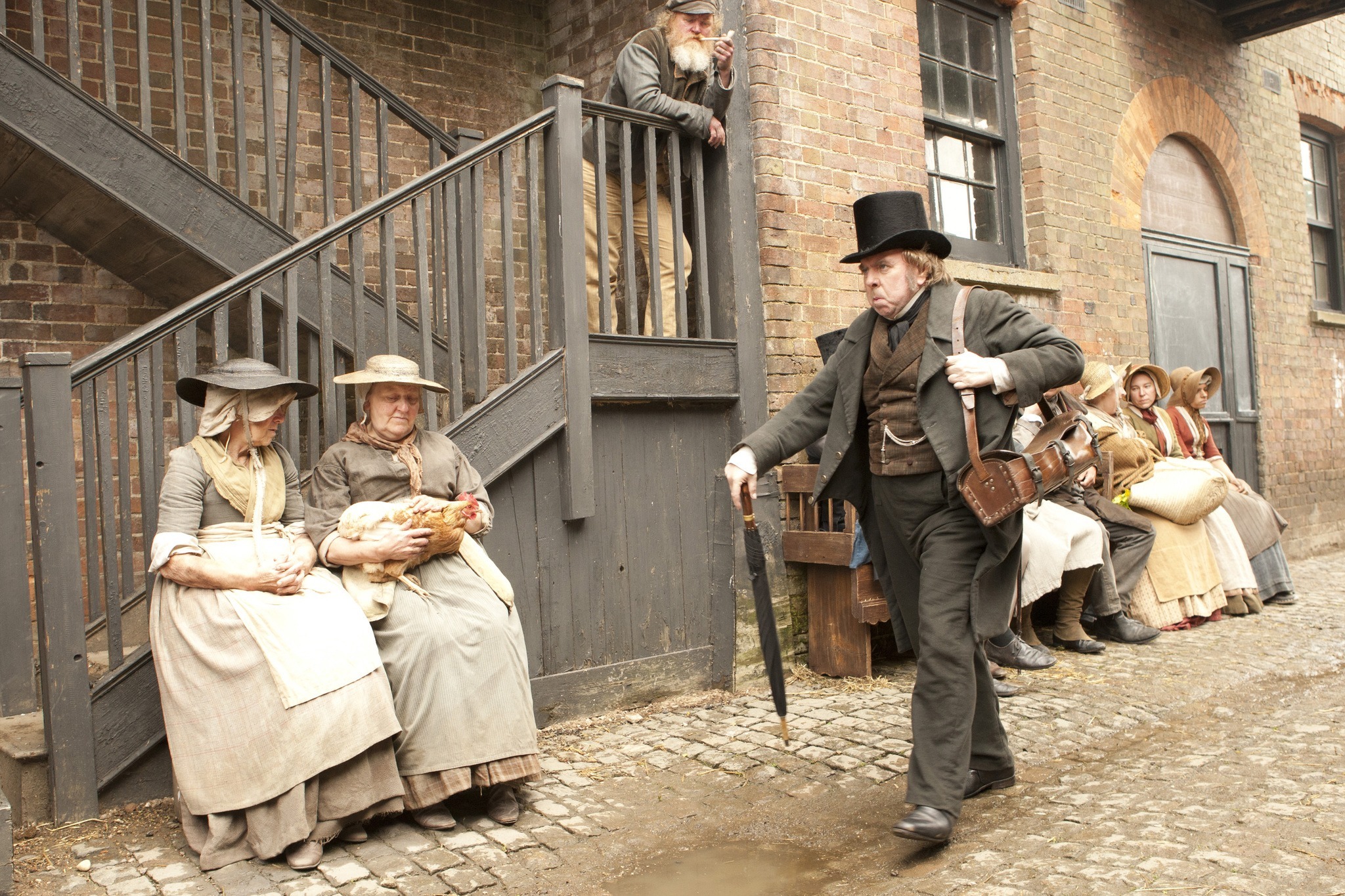Mr. Turner (2014)

Mr. Turner (2014), directed by Mike Leigh, is a biographical drama that explores the final 25 years of the life of the renowned British painter J. M. W. Turner. The film offers a captivating portrayal of the artist’s genius and complex personality, focusing on both his personal life and artistic evolution. Timothy Spall delivers an outstanding performance as Turner, capturing the intensity and contradictions of a man who was both beloved and misunderstood in his time. The film’s meticulous attention to detail, its rich cinematography, and its exploration of the art world make Mr. Turner a remarkable exploration of the life of one of Britain’s most celebrated artists.
The film begins in the later years of Turner’s life, as he is already an established figure in the art world but remains an enigmatic and often misunderstood person. Turner’s character is portrayed as intensely private, with a strong-willed and stubborn nature. He is deeply committed to his work, often at the expense of his personal relationships. The film shows his interactions with various people in his life, including his family, his lovers, and his colleagues, but it is clear that Turner is most at ease when he is immersed in the act of painting. This focus on his creative process is one of the key elements of the film, as it emphasizes the artist’s dedication to his craft.
Timothy Spall’s performance as J. M. W. Turner is the heart of the film. Spall portrays Turner with a remarkable depth, embodying the artist’s gruff exterior and his inner emotional turmoil. The film captures Turner’s complex relationships with his family, particularly with his father, whom he deeply respects yet feels conflicted about. Turner’s relationship with his housekeeper, Hannah (played by Dorothy Atkinson), is another significant aspect of the film. Though Turner is often harsh and distant, it is clear that his emotional connections are complicated by his focus on his work and his reluctance to engage with those around him on a deeper level. Spall’s portrayal of Turner’s eccentricities and his vulnerability in these personal moments is both compelling and moving.
The cinematography in Mr. Turner is nothing short of stunning. The film makes full use of beautiful landscapes, often featuring scenes of the English countryside, which serve as a reflection of Turner’s artistic vision. The cinematography emphasizes the light and color that were central to Turner’s later works. As Turner paints, the film offers glimpses of his works in progress, showcasing his innovative use of light and his distinctive approach to capturing nature. The visuals in Mr. Turner are carefully crafted to evoke the feeling of the artist’s masterpieces, blending seamlessly with the narrative and enhancing the audience’s understanding of his creative genius.

One of the central themes of the film is the tension between Turner’s revolutionary artistic vision and the more traditional views of his contemporaries. Turner’s later works were groundbreaking in their use of color and light, which was not fully appreciated during his lifetime. The film explores the resistance Turner faced from the art establishment, which saw his works as too unconventional and abstract. His radical approach to art was often misunderstood, and he faced criticism from critics and fellow artists alike. Yet, Turner remained steadfast in his pursuit of his unique vision, which ultimately helped shape the future of British landscape painting. The film highlights the isolation that often accompanies innovation, as Turner’s passion for his work distances him from both his peers and his family.

In addition to its exploration of Turner’s personal and artistic struggles, Mr. Turner also delves into the social and political context of the time. The film reflects on the changing world of 19th-century England, a period marked by industrialization and social upheaval. Turner’s work was shaped by the rapid changes in society, and the film subtly weaves in the impact of these developments on his art. Through Turner’s eyes, we see the beauty and tragedy of a world in transition, as well as the artist’s response to the challenges and uncertainties of his time. This historical context adds depth to the film, offering a broader perspective on Turner’s life and work.

In conclusion, Mr. Turner is a powerful and visually striking film that provides an intimate look at the life and work of one of Britain’s most celebrated artists. Through Timothy Spall’s exceptional performance and Mike Leigh’s thoughtful direction, the film captures the complexity of J. M. W. Turner’s character and his artistic legacy. The film’s exploration of Turner’s relationships, his dedication to his art, and the challenges he faced as an innovator make it a compelling and insightful portrayal of the artist’s life. Mr. Turner not only celebrates the genius of Turner’s work but also invites the audience to consider the personal sacrifices and struggles that accompany true artistic vision.











